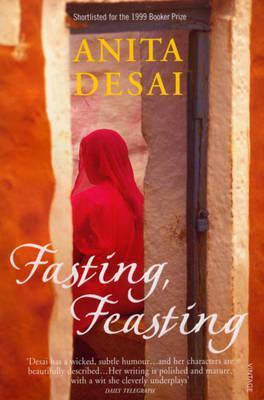A major throwback – I wrote this summary on Anita Desai’s Fasting, Feasting for a literature course in 3rd year of college and somehow stumbled upon it today while exploring my old Blogger profile. I couldn’t not share this.

My first foray into real literature was through “The God of Small Things”. Till then I was strolling into the fantasy worlds created by J. K. Rowling and Christopher Paolini; was being left awestruck by the imaginative capital that Dan Brown invested into his works and was also being poorly entertained by the writings of Chetan Bhagat. After I turned the last page of Arundhati Roy’s masterpiece, I was pretty sure I hadn’t understood anything except the basic storyline, but then again I was only an adolescent. I had failed to understand the emotions as truly as she had meant them, had missed the metaphors totally, but I did think that it was totally different from everything else I had read till date and I was pretty sure I was gonna want to read something like that again. I tried to understand the workings of that world again with Arvind Adiga, Gabriel Garcia Marquez, V S Naipaul, J M Coetzee, Amitav Ghosh and finally with Anita Desai.
Few books into my new found interest, I was asked by a dear friend who is also an avid reader, what special and different did I find in these Booker winning or nominated books. The simplest answer I could think of to make her understand was – it’s the same as watching a normal movie versus a full HD movie.
Anita Desai is to literature what Christopher Nolan is to films. There is a similarity in the way both present their work, a maze of time made from current and past scenes. At certain points, one needs to pause, rewind back and play again in order to keep-up with the story.
Fasting, Feasting is a story of two siblings. Uma, the unattractive, pitiable and clumsy first born who is a forty plus spinster living with (and serving) MamaPapa, her parents conjoined as they are a single identity than two separate people. She has been unfortunate enough to have not received the education she cherished so much, to have her father spend two dowries without getting married once successfully and to have never experienced the freedom from her unrelenting and orthodox parents and thus is the protagonist of the “fasting” part of the novel.
The protagonist for the “Feasting” part of the novel is Uma’s late born and much-cherished brother Arun who has never learned what wanting is as he was served everything on a silver platter for being the only son of the family. Arun, who has been raised to study and carry family’s name, is a loner. While staying with an American family during summers of his term at the University of Massachusetts, Arun remembers the meals he was offered so lovingly at home and that he refused so easily. He longs for some loneliness, to get away from everyone else.
Anita Desai has tried to contrast two different situations of the brother and the sister while also showing that the more different their situations are, the more similar they get. While Uma who has never had anything she liked and wanted, is yearning for freedom and love, Arun who has had everything from the moment he was born is also yearning for freedom from his parent’s expectations and for some solitude.
Fasting, Feasting is a novel about the gender inequality in the Indian society, the preference for a boy and the undermining of the need of a girl’s education. It is a brilliant description with beautifully written prose. Desai doesn’t get pretentious with her writing but cuts the sentences short and writes minimally. With only 200 odd pages, the book is a must read for lovers of culture and character-driven stories.
Share this:




